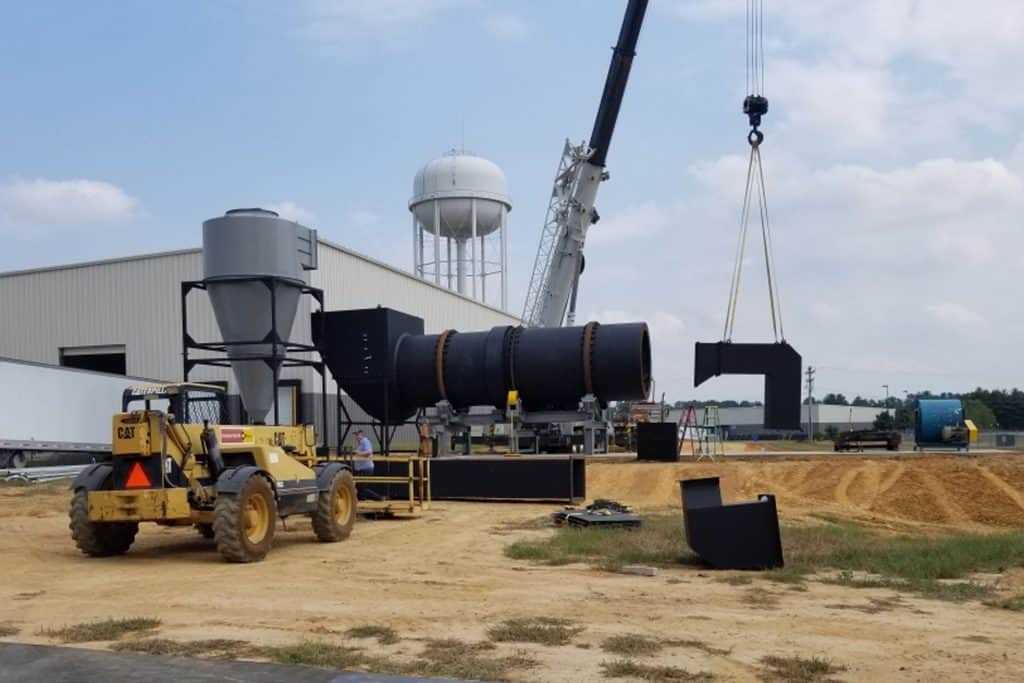Thermal desorption units (TDUs) play a crucial role in various industries, including environmental remediation, waste management, and air pollution control. These sophisticated devices are designed to extract and remove contaminants from solid materials through the application of heat. In this article, we will delve into the working principles and components of thermal desorption units, shedding light on the processes involved and their applications.
See a quick guide from the EPA on thermal desorption >
Understanding Thermal Desorption
Thermal desorption is a remediation technique that utilizes heat to volatilize and separate contaminants from contaminated solids, such as soil, sediment, or sludge. By subjecting the contaminated material to elevated temperatures, volatile organic compounds (VOCs), semi-volatile organic compounds (SVOCs), and other pollutants are effectively desorbed.

Basic Components of a Thermal Desorption Unit
A typical thermal desorption unit consists of several key components:
1. Feeding System
The feeding system facilitates the introduction of contaminated solids into the TDU. It may include conveyors, hoppers, or augers to transport the material into the unit.
3. Thermal Reactor
The thermal reactor is the central component of the TDU, where desorption takes place. It is a closed vessel capable of withstanding high temperatures and pressures. Inside the reactor, the contaminated material is heated to the desired temperature.
4. Heating System
The heating system employs various heat sources such as direct-fired burners, electric heaters, or hot oil systems to raise the temperature within the thermal reactor. Precise temperature control is crucial to ensure efficient desorption without causing secondary pollution.
5. Gas Treatment System
The gas treatment system is responsible for processing the off-gases generated during the desorption process. It typically consists of filters, scrubbers, condensers, and other devices to remove and recover contaminants or pollutants before releasing the cleaned gases into the atmosphere.
6. Exhaust Stack
The exhaust stack provides a controlled pathway for the treated gases to be released into the environment. It may include additional emission control systems to comply with local regulations and ensure minimal environmental impact.
The Desorption Process
The desorption process within a TDU involves several stages:
1. Preheating
The contaminated material is introduced into the thermal reactor and preheated to a specific temperature. This step ensures uniform heating and allows for the removal of any moisture or volatile components present.
2. Desorption
Once the preheating stage is complete, the temperature within the reactor is increased to the desired level for desorption. The elevated temperature causes the contaminants to vaporize or desorb from the solid matrix, turning into gaseous form.
3. Separation
The desorbed contaminants, along with water vapor and other gases, are carried by the airflow within the reactor. They are then transferred to the gas treatment system, where further separation and purification occur.
4. Cooling
After separation, the cleaned gases may undergo a cooling process to condense any remaining vapors. This helps recover valuable or harmful compounds, ensuring compliance with environmental regulations and enabling their potential reuse.
Applications of Thermal Desorption Units: Thermal desorption units find application in various industries and scenarios:
1. Environmental Remediation
TDUs are extensively used for the treatment of contaminated soil, sediment, and sludge at hazardous waste sites. By removing or reducing pollutants, they aid in restoring the environment and mitigating potential health risks.
2. Industrial Waste Management
Thermal desorption is employed to treat industrial wastes, including oily sludges, drilling cuttings, and contaminated solids from chemical or petrochemical processes. By recovering valuable resources and reducing the environmental footprint, TDUs provide an efficient waste management solution.
3. Air Pollution Control
TDUs can be utilized to control air pollution by treating emissions from industrial processes or exhaust gases containing volatile organic compounds. By removing harmful pollutants before release, they contribute to cleaner air and healthier living conditions.
4. Resource Recovery
Thermal desorption units can recover valuable compounds or materials from waste streams. For example, they can extract and separate hydrocarbons from oil-contaminated soils for potential reuse.
Conclusion
Thermal desorption units are powerful tools for the remediation of contaminated solids and the control of air pollution. By harnessing heat and carefully designed processes, these units efficiently extract and separate contaminants from solid materials, contributing to environmental protection and resource recovery. Continued advancements in thermal desorption technology will further enhance its effectiveness and broaden its range of applications in the years to come.
Vulcan Drying Systems specializes in custom building advanced TDUs based on your specific application. Get a thermal desorption unit quote today >




